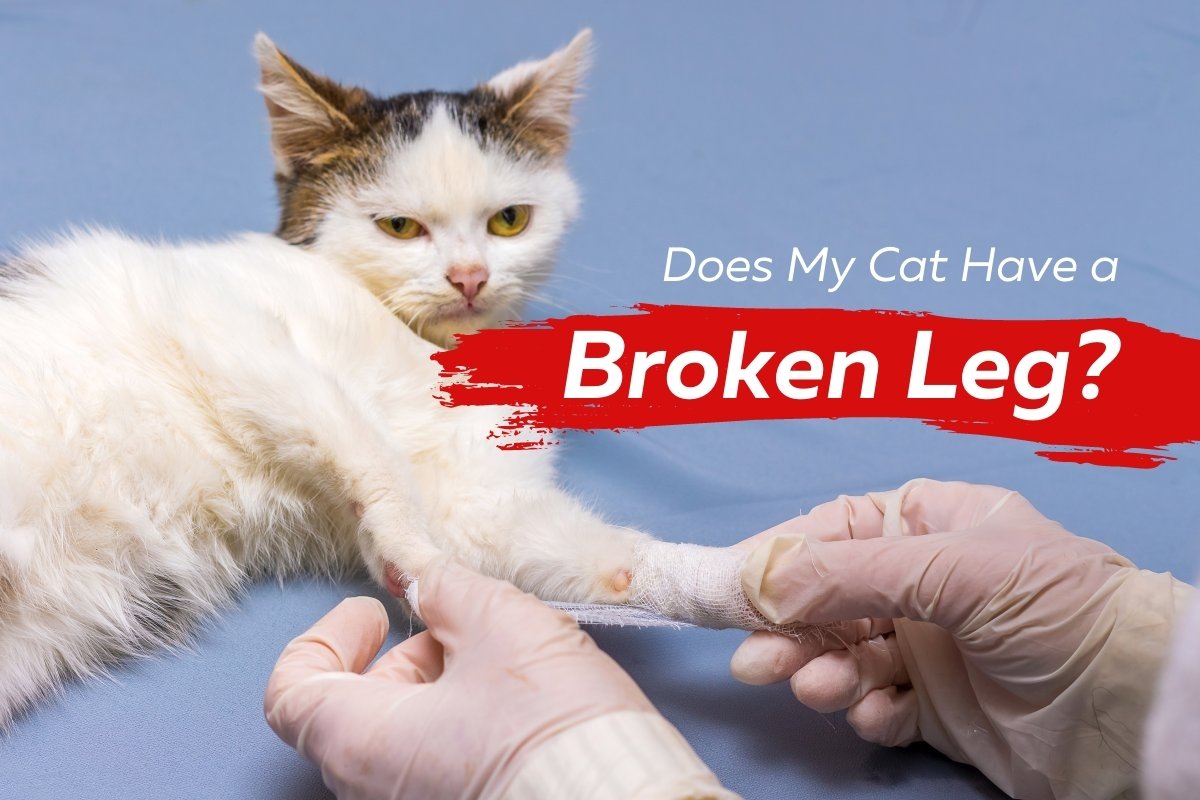Cats are beautiful and energetic pets that may do high and stunning jumps occasionally. Cats, despite their skill, can sometimes miss the mark and land precariously, resulting in injury. Accidents with automobiles can also result in broken bones, with leg fractures being the most prevalent.
When your cat’s leg is touched, it will moan, snarl, and cry, indicating it has a broken bone. You may also notice edema or bruising near the fractured location. In other cases, the cat will have a complex fracture, which means damaged bones poked through the skin, causing cuts and lesions around the fractured region.
Difference Between Cat Sprain and a Broken Leg
A sprain is a strained ligament or tendon that is usually less serious than a broken leg. Your cat might not be able to bear weight, and there may be visible redness and swelling. Visit a vet if your cat is acting strangely or looks to be in discomfort.
High falls or automobile accidents cause many sprains and limb breaks. Your cat may be suffering from internal ailments that are not visible but require immediate treatment.
Causes of a Broken Leg in Cats
Fractures frequently develop as a result of a traumatic accident or incident or due to an underlying reason that causes bone weakness, which raises the likelihood of fractures even when normal pressures influence the bones. Traffic accidents, fall from great heights, and animal attacks are the most common traumatizing episodes resulting in fractures.
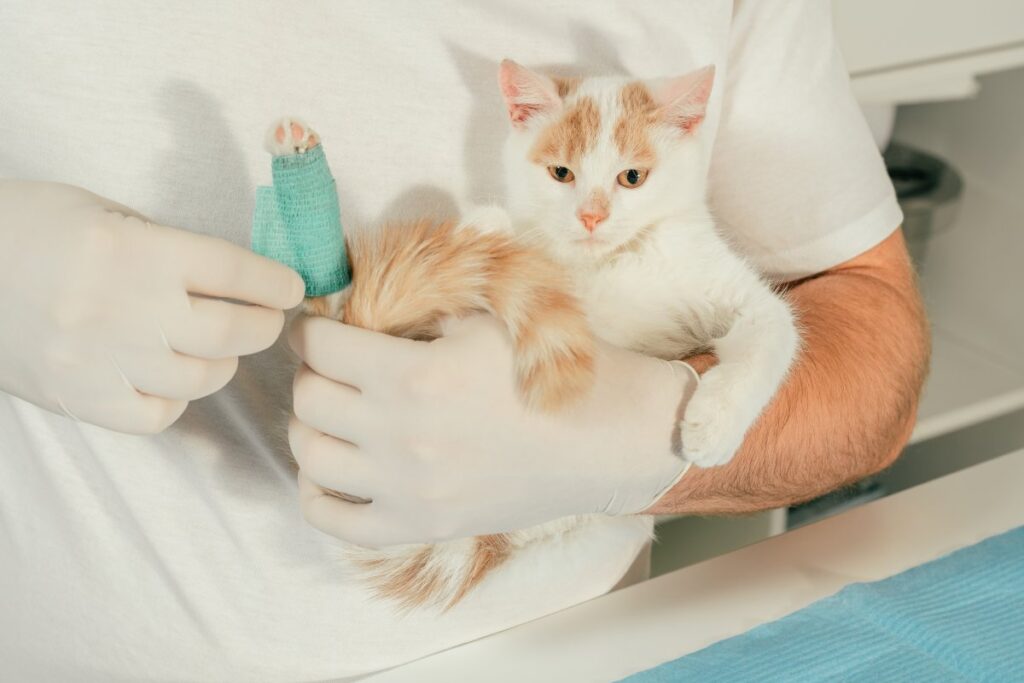
Types of Fractures in Cats
Cats commonly suffer from four types of fractures. They are as follows:
1. Closed Fractures
The skin is frequently intact in this fracture, and the bone beneath the skin is the only affected item. If your cat has this type of fracture, you should consult a vet about surgical treatments that may include surgery to correct the internal bone condition.
2. Greenstick Fractures
The bone is cracked but not broken in these circumstances. Even if there is mild swelling and limping, you should still consult a veterinarian for a medical evaluation of splinting. Poor healing can cause lameness and limited joint motion.
3. Compound Fractures
When shattered bones protrude through broken skin, the injury is known as a compound fracture. The jutting bones are frequently exposed and are visible, and compound fractures can expose cats to infections caused by debris or other pollutants.
4. Growth Plate Fractures
Fracture through the weaker cartilage development plate at the end of the femur is relatively common in young cats. Growth plate fracturescan develop due to trauma within the home, such as the high areas that young cats get up to or from outside incidents, such as road traffic accidents.
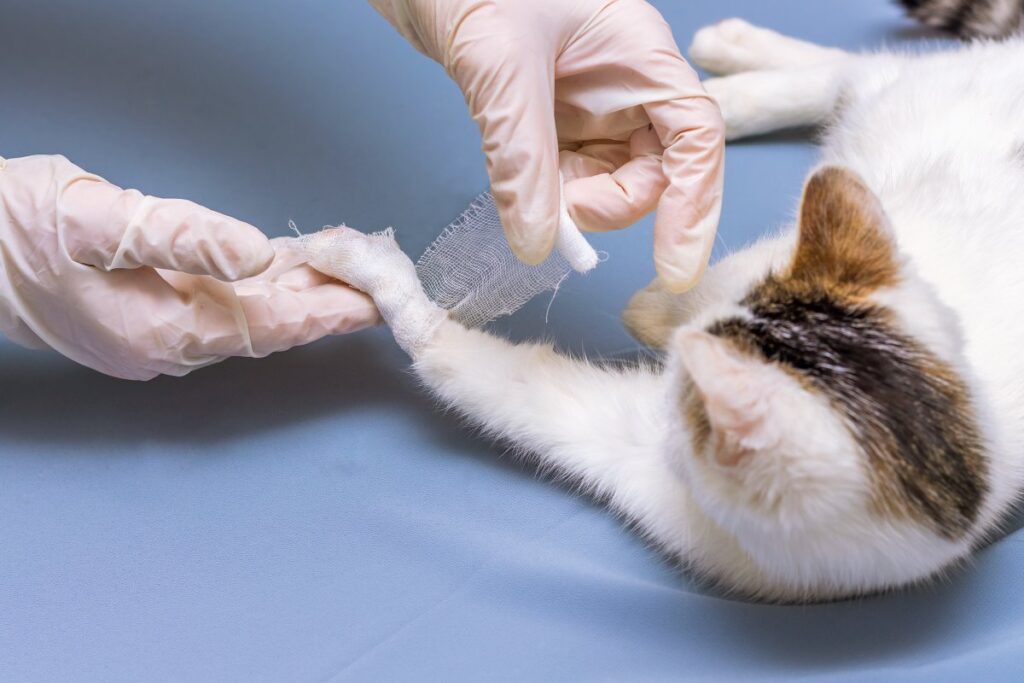
How to Tell if My Cat Has a Broken Leg?
Look for the following signs to see whether your cat has a fractured leg:
- Limping or unusual walking
- A bruise or swelling in the affected area
- Unusual quick breathing
- Showing signs of discomfort
- Inability to run or jump
- Aggression
- A decrease in appetite
- Absence of grooming
If there is an apparent cause, such as bleeding, swelling, or the limb hanging unusually, contact your veterinarian to avoid infection or a worsening condition. If you are confused about how to handle the situation, you should contact your veterinarian, and your veterinarian will advise you all about the treatment and aftercare.
How Are Broken Legs Diagnosed in Cats?
Your veterinarian will perform a complete physical exam of your cat to determine the source of the discomfort and swelling and the presence of lameness. They will also require a thorough history, including the cat’s age and any medical issues that may have led to the fracture. If the occurrence that caused the break is unknown, any odd actions or events your pet may have been engaged in should be reported to your veterinarian.
Your veterinarian will request x-rays of the affected area. Sedation may be required to immobilize your pet and obtain quality x-rays. X-rays of your cat’s injured and unharmed sides may be taken for comparison.
If there is a history or symptoms of cancer, or if a metabolic illness may be a significant contributor to the fracture, testing to confirm their existence may be performed.
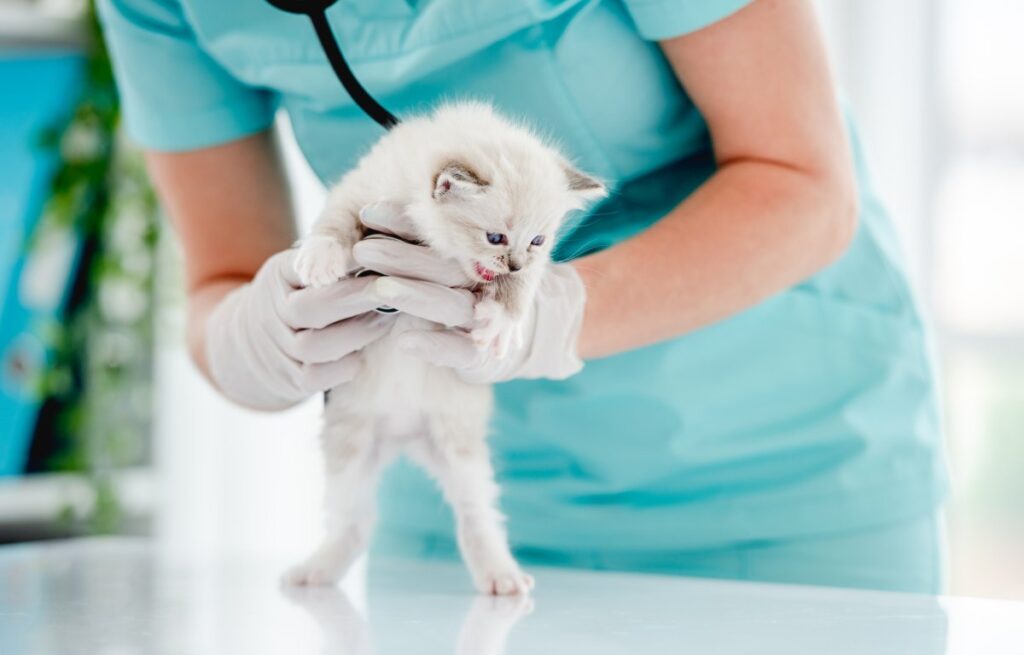
Home Care After the Treatment
- Follow all of your veterinarian’s directions strictly.
- Keep your cat on a rigorous rest schedule for at least two to four weeks. After that, you can let your cat roam around the house. However, there should be a limit to how long they can play and exercise.
- Pay close attention to the wound. Keep a close eye on them and look for any redness, swelling, or unusual discharge from the wound.
- All bandages, splints, and casts must be maintained clean and dry.
- Ensure to return for all of your cat’s routine check-ups as prescribed by your vet.
- Following the initial therapy, repeat X-rays are recommended to check whether the fracture is healing appropriately.
Treating Broken Legs in Cats
Your veterinarian will evaluate the injury and treat the bone. Simple fractures can occasionally be treated with a splint, but many cats require surgery to mend fractured bones entirely. A screw, surgical pins, or even plates may be required to hold the fractured bone pieces together while they mend.
If your cat has hurt her leg, the treatment plan will be more comprehensive, requiring full-body movement restriction until the break heals. Your vet may recommend amputation. Cats can adapt to life without a piece of tail and adjust their motions to compensate for the loss of a leg.
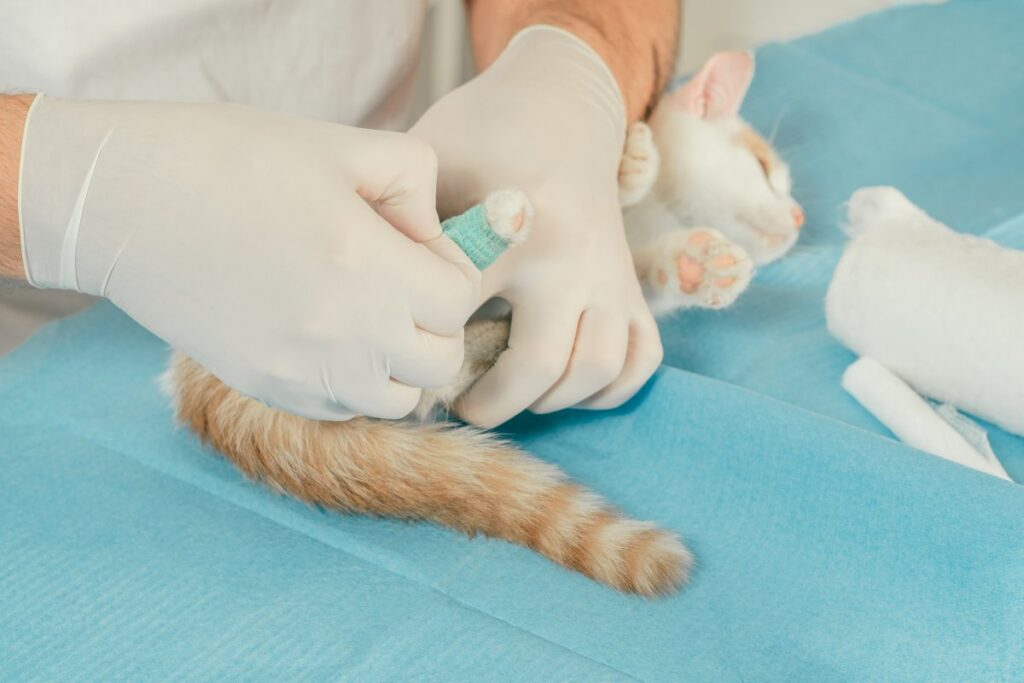
Keeping Cats Safe from Injuries
Certain activities and situations place cats at a higher risk of damage, so it’s vital to keep these in mind to keep them safe and protected.
- Your cat’s playing must be monitored carefully.
- Keep cats away from high furniture, and a fall from the top of a couch or furniture might result in injuries.
- Keep your cat out of mischief and watch them while exploring outside.
- Balconies and open windows represent an additional risk of a kitten falling; ensure your cat is safely kept inside your home.
Summing Up
Broken bones require rest and time to heal. Your cat will most likely require rest in a large cage enough to accommodate food, drink, a litter tray, and a bed. Some cats tolerate confinement better than others, but it is critical to keep them as motionless as possible in the early days of a broken leg. They will progressively be permitted into one room and slowly return to everyday life.

